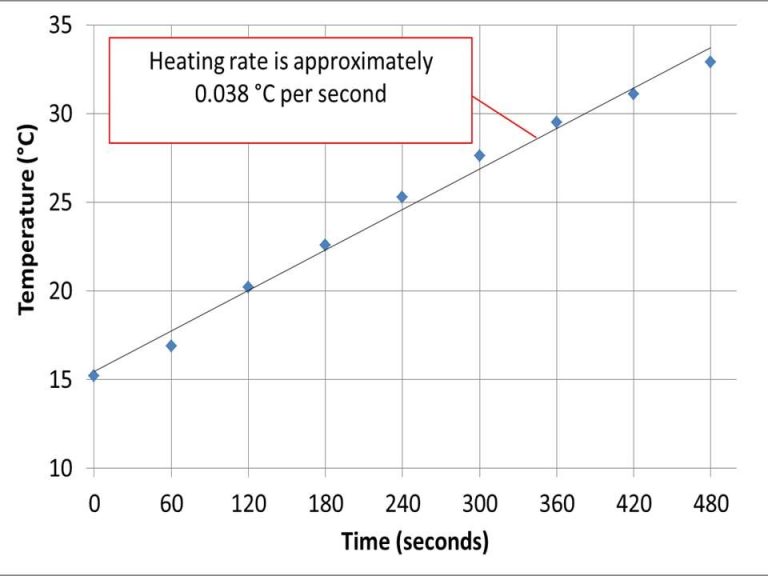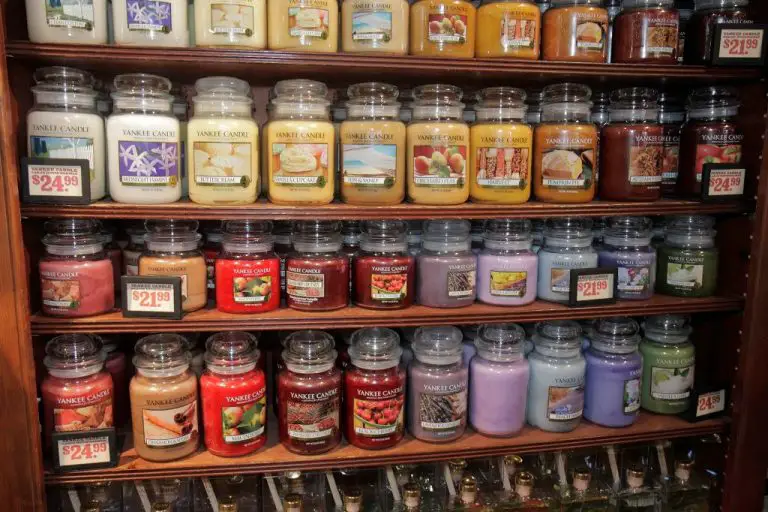Is It Safe To Make Candles With Paraffin Wax?
Paraffin wax is a popular material used for candle making due to its low cost and easy availability. It is derived from petroleum and has been used in candle making for over 100 years. Paraffin candles became widespread in the late 19th century as paraffin oil refining allowed for large-scale production of this wax at an affordable price point.
Today, paraffin remains one of the most common waxes for candle making, though some makers have started using alternatives like soy wax or beeswax. Paraffin wax melts easily and produces candles with a nice glow, fragrance throw, and clean burn. However, there are some concerns around paraffin’s environmental impact and potential health risks. This article provides an overview of paraffin wax and its use in candlemaking, including key considerations around safety and sustainability.
What is Paraffin Wax?
Paraffin wax is a soft, odorless, tasteless material derived from petroleum, coal or oil shale that consists of a mixture of hydrocarbon molecules containing between twenty and forty carbon atoms (https://en.wikipedia.org/wiki/Paraffin_wax). It is solid at room temperature and begins to melt above approximately 37°C (99°F), making it easy to melt and mold. Paraffin wax is colorless and inert, with a very low viscosity when melted, making it useful for applications like candle-making. It can also be found as a whitish, translucent solid.

Some key properties that define paraffin wax:
- Soft, pliable texture at room temperature
- Colorless and odorless
- Melting point of around 45–65°C (113–149°F)
- Low viscosity when melted
- Chemically inert and non-toxic
Paraffin wax is derived from petroleum in a process called fractional distillation and is purified further using processes like solvent dewaxing. It has a crystalline structure and consists of straight chain, saturated hydrocarbons. Paraffin waxes with longer hydrocarbon chains have higher melting points.
Is Paraffin Wax Toxic?
There is some concern over the potential toxicity of paraffin wax, particularly when used in candles. When burned, paraffin candles release compounds like toluene, benzene, and acrolein which can be irritating or harmful if inhaled (source). However, studies show that paraffin candles do not emit these compounds at levels that pose any meaningful risk to human health, especially when candles are burned occasionally and in well-ventilated environments (source).
Paraffin wax itself is not considered toxic or dangerous on its own. It is chemically inert and not appreciably absorbed or metabolized by the body. Paraffin has been safely used in cosmetics, food processing, and medical applications for over a century. While inhaling any kind of smoke can be irritating, there is no clear scientific evidence that the compounds released specifically from paraffin candles pose a health hazard under typical usage conditions (source).
Paraffin Wax vs Soy Wax
Paraffin wax and soy wax are the two most common types of wax used in candle making. While both can produce high quality candles, there are some key differences between the two waxes:
Cost: Paraffin wax is generally cheaper than soy wax. Paraffin wax comes from petroleum, so it is much more affordable and widely available (cite 1).
Burn Time: Soy wax candles typically burn longer than paraffin candles. Soy wax has a higher density and requires more heat to liquify and burn (cite 2).
Scent Throw: Paraffin wax is often considered to have better scent throw than soy wax. The natural scent of soy wax can sometimes compete with fragrance oils (cite 3).
Environmental Impact: Soy wax is biodegradable and made from a renewable resource. Paraffin wax is petroleum-based, so it has a larger carbon footprint (cite 3).
Toxicity: Both paraffin and soy wax are considered non-toxic and safe to burn. However, soy wax is often perceived as more natural (cite 3).
Overall, soy wax is viewed as a more sustainable and natural option compared to paraffin wax. However, paraffin wax can be more cost effective and provide a stronger scent throw. Candle makers should consider both the pros and cons of each type of wax.
Making Paraffin Candles
Making candles with paraffin wax is relatively straightforward. Here are some best practices for safely making paraffin candles at home:
- Use wax specifically made for candle making. ArtMinds and Gulf Wax make high quality paraffin wax blocks.
- Melt the wax using a double boiler or makeshift double boiler to avoid overheating. Heat the wax to 175-185°F to properly melt it.
- Add dyes and fragrances after the wax is melted and has cooled slightly to 175-180°F. Stir thoroughly to distribute evenly.
- Pour the wax into wick-lined containers or molds slowly to prevent air bubbles. Allow candles to fully cool and cure for 24-48 hours before burning.
- Make sure candle containers are clear of dust and debris before pouring in wax. This prevents contamination.
- Work in a well-ventilated area since paraffin wax releases fumes when melted. Open windows, use fans, and avoid leaning over wax.
- Take safety precautions by wearing heat resistant gloves, long sleeves, and keeping a fire extinguisher on hand.
Following proper procedures when making paraffin candles reduces the risks and ensures a quality homemade candle product.
Using Paraffin Candles
When burning paraffin candles, it’s important to take safety precautions to minimize any potential health risks. Here are some tips:
- Make sure to trim wicks to 1⁄4 inch before lighting to prevent smoking and soot production. Long wicks create more soot.
- Burn candles in a well-ventilated area and avoid burning for more than 4 hours at a time. Ventilation helps dissipate any chemicals released.
- Keep candles away from drafts, vents, ceiling fans, or air currents to prevent rapid, uneven burning. This helps reduce soot.
- Place candles on a stable, heat-resistant surface. Keep them away from flammable materials like curtains.
- Never leave burning candles unattended. Extinguish candles before leaving a room.
- Keep candles out of reach of children and pets.
- Avoid burning candles when sleeping, when no one is home, or for long periods of time.
- Stop using candles if you experience headaches, nausea or breathing issues.
Taking precautions allows you to safely enjoy paraffin candles while minimizing exposure to potentially harmful chemicals. Proper ventilation, wick trimming, and limited burn times are key.
Health Risks
Burning paraffin wax candles may release chemicals that can be harmful to your health. Paraffin wax is derived from petroleum, and when burned it can emit volatile organic compounds (VOCs) like benzene, toluene, and xylene. According to one study, the pollutants released from burning paraffin candles are at concerning levels and can pose health risks with prolonged exposure (https://www.ncbi.nlm.nih.gov/pmc/articles/PMC9832800/).
The VOCs released from paraffin wax candles have been linked to headaches, asthma attacks, and other respiratory issues. The soot produced can also cause problems for people with allergies or respiratory conditions like asthma. Some studies have found connections between paraffin candle emissions and increased risk of cancer as well, but more research is needed. Children and pets may be especially vulnerable to the pollutants released.
However, occasional paraffin candle use in a well-ventilated area is unlikely to cause significant problems for most healthy adults. The risks increase with frequent use, longer burn times, poor ventilation, and existing health vulnerabilities. Proper candle placement and avoiding very long or frequent burning can help minimize exposure to the potentially harmful chemicals.
Environmental Impact
Paraffin wax raises concerns regarding its environmental sustainability. When burned, paraffin wax releases compounds like toluene and benzene into the air, which can be toxic and carcinogenic [1]. It also releases more carbon dioxide per candle than vegetable-based waxes. Since paraffin is derived from petroleum, its production relies on fossil fuels and contributes to climate change.
Paraffin wax is also non-biodegradable and non-renewable. Once released into the environment, it persists for long periods of time. One study found paraffin wax accumulating on shorelines worldwide, threatening marine ecosystems [2]. Proper disposal of paraffin products is important to limit its environmental impact. Overall, paraffin wax raises sustainability concerns compared to more eco-friendly natural wax alternatives.
Alternatives to Paraffin
Besides paraffin wax, some of the most commonly used waxes for candle making are soy wax, beeswax, and coconut wax [1]. These provide natural, non-toxic alternatives to paraffin that can produce clean-burning candles.
Soy wax in particular has become a popular alternative, as it is made from soybeans. It is biodegradable and renewable. Soy wax burns slower and cleaner than paraffin, producing less soot. It also holds scent well. The drawbacks are that soy wax is typically more expensive than paraffin and may not hold its shape as well in warmer environments.
Beeswax is another common natural wax for candle making. It is made from honeycomb produced by honey bees. Beeswax burns brighter and longer compared to paraffin. It has a lovely natural honey aroma. However, beeswax candles can be quite expensive to produce. The wax also burns quicker than paraffin, so beeswax candles tend not to last as long.
Coconut wax comes from the oils in coconut fruit. It is a sustainable, natural wax that burns slowly and cleanly. Coconut wax holds scent very well. The downside is that it can be prone to melting in high temperatures. Coconut wax also tends to be more expensive than paraffin.
There are many other plant-based and natural waxes that can provide alternatives to paraffin for candle making, such as bayberry, palm, and wood waxes. With some experimentation, candle makers can find alternative waxes that suit their needs and produce quality candles that burn cleanly.
Conclusion
While paraffin wax is widely used for making candles and cosmetics, it may pose some health and environmental risks. Paraffin is derived from petroleum, and some low-quality paraffin waxes can release carcinogens when burned. However, high-quality paraffin meets FDA standards for safety. The biggest concern with paraffin is its environmental impact, as it is a non-renewable resource.
Considering alternatives like soy wax, beeswax, or other natural waxes is advisable for those concerned about sustainability. With proper ventilation and high-quality paraffin, homemade paraffin candles can be reasonably safe for indoor use. But individuals with scent sensitivities or respiratory issues may still wish to avoid paraffin candles altogether.
Overall, paraffin wax isn’t highly toxic, but it isn’t the most eco-friendly option either. Weighing the pros and cons of different waxes can help determine the best choice for your candle-making needs. Proper safety precautions are advised when burning any candle.




